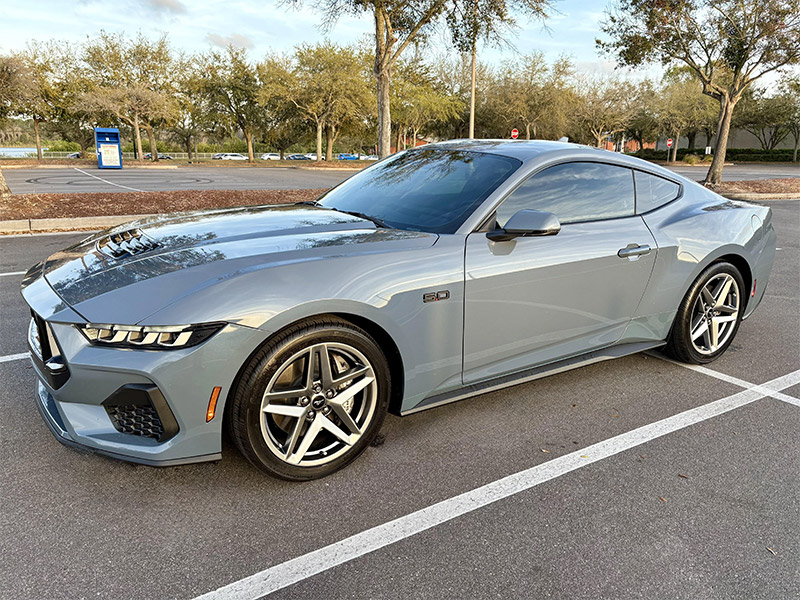
The drivetrain is a vital system in any vehicle, connecting the engine to the wheels, allowing the car to move. It includes several components that work together to transfer power, regulate speed, and ensure control of the vehicle. In this article, we’ll break down the key parts of a car’s drivetrain, explain the different types of drivetrains, and how they affect performance and handling.
Components of a Drivetrain
A car’s drivetrain consists of several key components, each playing a specific role in transferring the engine’s power to the wheels:
- Engine: While not technically part of the drivetrain, the engine generates the power that the drivetrain must transfer. The drivetrain connects directly to the engine’s output shaft, delivering power to the wheels.
- Transmission: The transmission is responsible for managing the amount of power and torque that is sent to the wheels by changing gears. Whether manual or automatic, it adjusts the vehicle’s speed and power by engaging different gear ratios. In an automatic transmission, gears shift automatically based on speed and load, while a manual transmission requires the driver to shift gears using a clutch.
- Driveshaft: The driveshaft is a cylindrical shaft that transmits power from the transmission to the differential. In rear-wheel-drive (RWD) cars, it runs the length of the vehicle, connecting the transmission at the front to the rear axle.
- Differential: The differential splits the engine torque two ways, allowing the wheels to rotate at different speeds when turning. This is crucial for handling, as the inner wheels must rotate slower than the outer wheels during a turn to avoid skidding or losing traction.
- Axles: Axles connect the differential to the wheels. They rotate the wheels at a speed controlled by the transmission and differential. There are typically two types of axles:
- Live axle: Transmits power to the wheels.
- Dead axle: Supports the vehicle’s weight but does not transmit power.
Types of Drivetrains
Different drivetrain configurations alter how power is distributed to the wheels, and each has distinct advantages and trade-offs.
- Front-Wheel Drive (FWD): In a front-wheel-drive vehicle, the power is sent to the front wheels. This configuration is common in many modern cars because it is lightweight, provides better fuel economy, and improves traction in adverse weather conditions. The front wheels handle both the power and steering, which can lead to understeer during aggressive cornering.
- Rear-Wheel Drive (RWD): Rear-wheel-drive systems send power to the rear wheels, while the front wheels are responsible for steering. This setup provides better balance and handling, especially in high-performance cars. RWD cars are known for their dynamic driving experience, offering better weight distribution. However, they are more prone to oversteer, particularly in wet or icy conditions.
- All-Wheel Drive (AWD): AWD systems distribute power to all four wheels, improving traction and stability on various surfaces. There are two types of AWD systems:
- Full-time AWD: Power is always delivered to all four wheels.
- Part-time AWD: The system automatically adjusts to send power to either two or all four wheels based on road conditions.
- Four-Wheel Drive (4WD): Four-wheel-drive systems are often found in off-road vehicles and trucks. Like AWD, 4WD delivers power to all four wheels, but it allows the driver to engage or disengage the system manually. 4WD vehicles usually come with high and low gearing options for tackling rough terrains like mud, snow, or rocks. However, 4WD systems tend to be heavier and less fuel-efficient compared to AWD or two-wheel-drive configurations.
How the Drivetrain Affects Performance
The choice of drivetrain significantly impacts a vehicle’s performance, handling, and efficiency.
- Acceleration: Vehicles with RWD tend to accelerate faster because the rear wheels push the vehicle forward, providing better traction when accelerating hard. FWD vehicles may struggle with traction under high power, especially in high-performance cars.
- Handling: RWD vehicles often offer better handling, particularly in high-speed driving or sports car applications, thanks to better weight distribution. FWD vehicles, however, are more predictable and stable in everyday driving conditions.
- Traction: AWD and 4WD systems provide superior traction, especially in slippery or off-road conditions, by distributing power to all four wheels. This helps maintain control and stability in various terrains and weather conditions.
- Fuel Efficiency: FWD cars tend to be the most fuel-efficient, as they have fewer components and less drivetrain weight. AWD and 4WD systems add weight and complexity, leading to a slight decrease in fuel economy.
Drivetrain Maintenance
Maintaining a car’s drivetrain is crucial for ensuring smooth performance and prolonging the life of the vehicle. Some common maintenance tasks include:
- Checking transmission fluid: Transmission fluid lubricates the gears and components within the transmission. It’s important to check the fluid regularly and change it according to the manufacturer’s recommendations to prevent transmission damage.
- Inspecting the driveshaft and differential: Regular inspection of the driveshaft and differential for leaks or wear helps prevent drivetrain issues. Differential fluid should also be replaced at regular intervals.
- Axle checks: Axles should be inspected for damage or wear, especially if the vehicle is used off-road or under heavy loads.
Conclusion
Understanding how a car’s drivetrain works provides insight into the vehicle’s performance, handling, and efficiency. Whether you’re driving a front-wheel-drive commuter car or a rear-wheel-drive sports car, knowing the strengths and weaknesses of your drivetrain can help you make informed decisions about maintenance, performance upgrades, or even the next vehicle you purchase.

